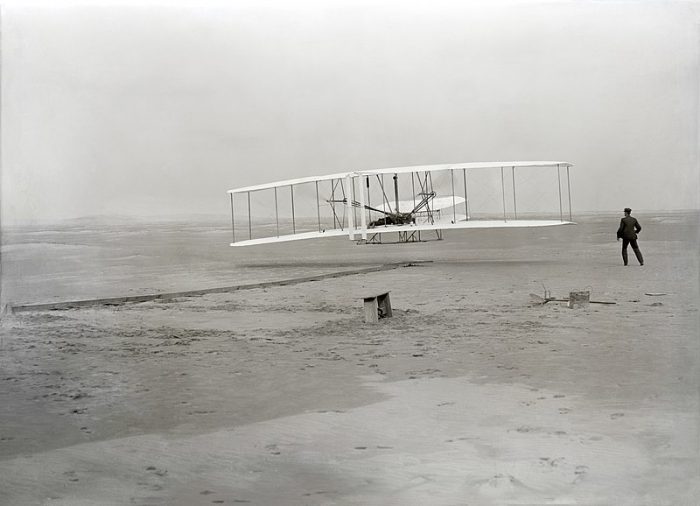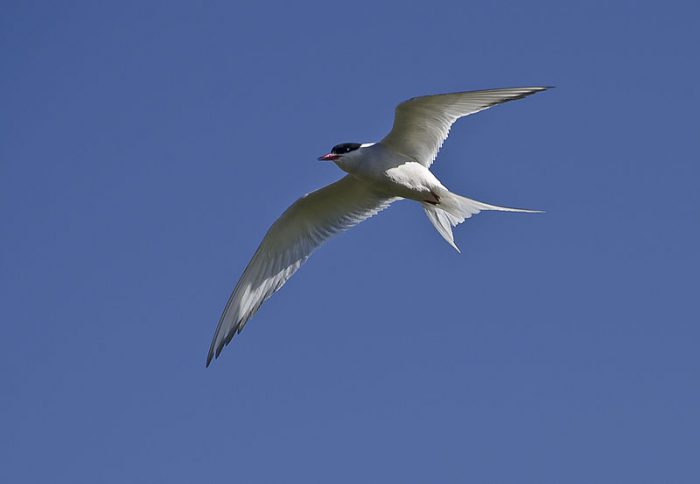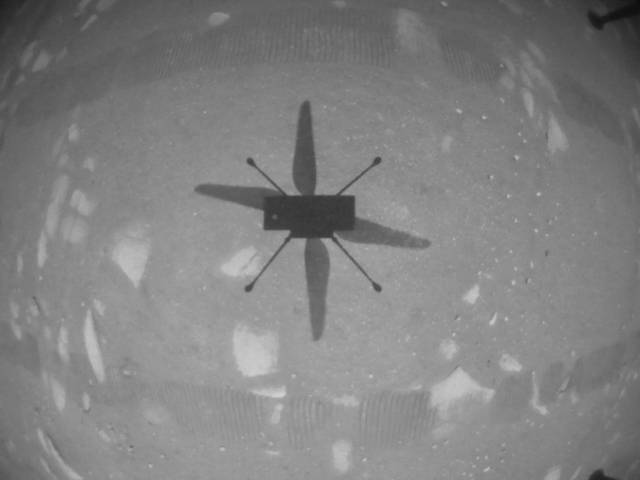After years of tests, months of anticipation, and a week-or-so of delays, it has finally happened.
This morning April 19, Ingenuity—the NASA helicopter drone that was taken to Mars along with the rover Perseverance—completed its task.
It flew on another world.
At 3:34am EDT (the same time zone as New York, Montreal, and Toronto), Ingenuity's rotor blades spun, lifting the craft about 3 metres (10 feet) off the ground. It only flew for 39.1 seconds before landing safely back on the ground. But that was more than long enough, and high enough to make history! Have a look!
Simply put, this is the first-ever powered flight on another planet. That's truly incredible.
Put it into perspective, Part 1

The first flight by the Wright Flyer didn't need to be long or high to change the world. (Wikimedia Commons)
Okay, but let's say for a moment that you don't see what all of the fuss is about. After all, a tiny drone hovers 3 metres off the ground for less than a minute? These days, you can see that happen about six times an hour in some public parks. But when it comes to flight, big things can come from small achievements.
For proof, you only have to look to the first-ever powered flight here on Earth—the Wright Brothers' plane, The Wright Flyer, on December 17, 1903. That flight? It lasted only 12 seconds, barely left the ground, and flew a distance of just 37 metres (120 feet). But it changed everything.
Within a decade, the lessons learned there had allowed humans to build planes that could fly thousands of feet in the air, at high speeds, and for hours at a time. Not bad for just ten years of work!
Put it into perspective, Part 2

An arctic tern is built to fly effortlessly for miles and days here on Earth. But on Mars? It likely wouldn't even make it off the ground. (Wikimedia Commons)
And there's another thing to think about when you look at what Ingenuity's flight means. The conditions of Mars.
You may not think of Earth's atmosphere as 'heavy' or 'thick', but compared to Mars', it is. Even if they could breathe its air or survive its frigid temperatures, the birds, bats, and flying insects of Earth would all struggle to even get a foot off the ground, never mind actually fly.
This is because the atmosphere on Mars is extremely thin—it has about 1% the pressure of Earth's atmosphere at the surface. So even though Mars' gravity is less than Earth's, it is super challenging to takeoff because there are so few air molecules in the atmosphere. And pushing against those molecules is how flying things generate lift—the miracle force that lets them fly!
Back to birds, having them fly on Mars would be like asking fish to swim through Earth's air. It's way too thin compared to what they are used to. It's just not what they're designed for.
Just the beginning
For a powered flight on Mars to be successful, it was always going to be like planning the Wright Flyer's first flight all over again. That is why what happened this morning is so incredible. And it opens the door for a whole new type of exploration.
Ingenuity itself is not a very sophisticated machine. It has no scientific instruments on board. Like the Wright Flyer, it was designed to do one thing only. Fly. But now that it has done that?
NASA can use what it has learned to build bigger and more complex drones to explore Mars. This means that in the future, instead of being confined to the surface with rovers like Perseverance and Curiosity, the planet can also be explored from the air. And it might even mean vehicles that humans can fly in once they reach Mars some day in the future.
While you dream of what is possible, have a look at how NASA got to today by looking at this footage of early tests of the Ingenuity drone.
 A picture of the ground taken by Ingenuity's navigation camera during its historic fligth this morning. (NASA)
A picture of the ground taken by Ingenuity's navigation camera during its historic fligth this morning. (NASA)










😉 😉